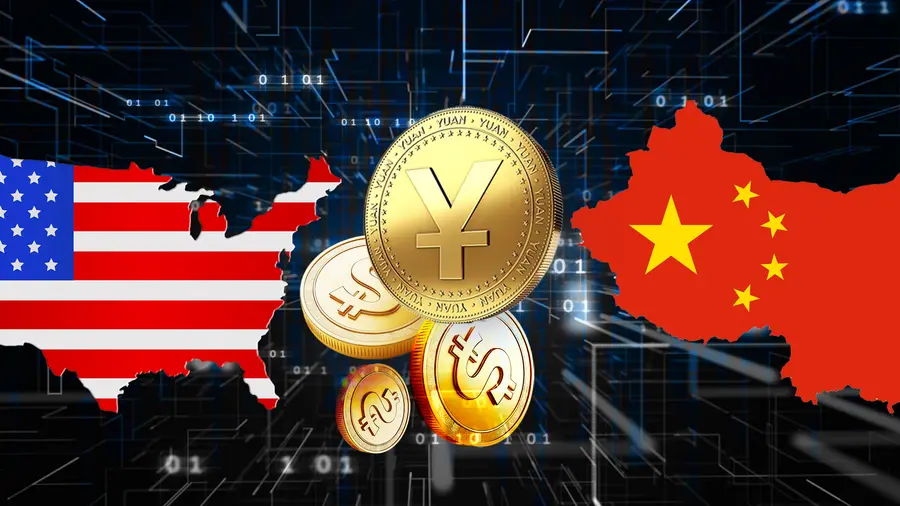Two economic superpowers—**the United States and China**—are embroiled in a high-stakes competition to lead the global digital currency revolution as the world accelerates toward a new era of digital money. The development and deployment of Central Bank Digital Currencies (CBDCs) are the fundamental components of this competition. These technologies have the potential to revolutionize the future of finance, international trade, and geopolitical influence.
The motivations, strategies, and prospective implications of the U.S.-China digital currency rivalry—and its implications for the global economy—will be the focus of this post.
The Importance of Race
CBDCs are a fundamental transition from traditional banking and physical cash to completely digital, programmable money that is issued by central banks. In addition to their convenience, CBDCs have the potential to revolutionize:
* **International currency dominance** * **Cross-border payments and remittances** * **Financial inclusion**
The **architecture of the future global financial system** could be influenced by the winner of this competition.
China’s Digital Yuan: Scale and Speed
China is widely recognized as the **leader** in the digital currency race. For years, the People’s Bank of China (PBOC) has been in the process of developing its Digital Currency Electronic Payment (DCEP), which is also known as the **digital yuan**. It has already conducted numerous pilot projects:
* **Extensive implementation** in significant urban centers, encompassing government services, transportation, and retail payments. Seamless functionality is achieved through integration with well-known applications such as Alipay and WeChat.
* The digital yuan is distributed through a two-tier system that involves commercial institutions. Strong government support for surveillance and control capabilities, which is consistent with China’s overarching governance model.
China’s strategy prioritizes **rapid deployment, domestic adoption, and potential global use cases**, particularly in countries participating in the Belt and Road Initiative.
🇺. Cautious Innovation: The U.S. Digital Dollar
The **digital dollar** is being approached by the U.S. Federal Reserve with a more measured approach:
* Prioritize financial stability, security, and privacy by concentrating on **public consultations and research**.
* Collaborating with Congress and other U.S. agencies to assess the hazards and benefits.
* Apprehension regarding the potential consequences of a digital dollar on banks, monetary policy, and the dollar’s global reserve status. There is currently no official launch date; however, there is a growing amount of bipartisan support and pilot programs at the state and private levels.
The United States endeavors to maintain democratic values, including transparency and privacy, while also balancing **technological innovation with regulatory safeguards**.
⚔️ Primary Stakeholders
* **Speed vs. Caution:** The U.S.’s cautious approach contrasts with China’s aggressive rollout. * **Privacy vs. Control:** The U.S. advocates for user privacy, while China’s system facilitates extensive state monitoring.
• **Global Influence:** The U.S. dollar’s dominance in international trade and finance could be challenged by China’s digital yuan. • **Technology Standards:** The digital currency ecosystem may be fragmented by competing blockchain and cryptographic standards.
Who is most likely to emerge victorious?
There are numerous variables that influence the response:
• **Adoption and trust:** Which currency do consumers, businesses, and governments trust and prefer? • **Interoperability:** Will digital currencies collaborate or fragment global payments?
* **Geopolitics:** The adoption of the system will be influenced by trade dynamics, alliances, and sanctions. * **Innovation pace:** Who is responsible for the development of a more secure, extensible, and adaptable system?
It is conceivable that the world will witness **a multipolar digital currency system**, in which the digital dollar, renminbi, euro, and other currencies coexist.
Final Thoughts: The Race Is Just Beginning
The U.S.-China digital currency race is not solely about technology; it is a competition for **financial leadership, sovereignty, and geopolitical influence** in the 21st century. An understanding of this rivalry is essential for the successful navigation of the emerging digital economy by businesses, investors, and citizens worldwide.
**What is your perspective on the digital currency race? Will a single nation dominate, or will it be a global patchwork? It is time to engage in a conversation! **

Leave a Reply